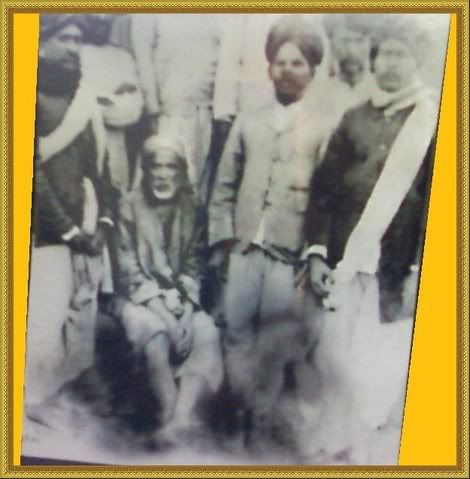Dear All wish U HAPPY GURUPORNIMA.
om sairam
As You Walk With The Guru, You Walk In The Light Of
Existence, Away From The Darkness Of Ignorance.
You Leave Behind All The Problems Of Your Life And
Move Towards The Peak Experiences Of Life.

Hindus attach paramount importance to spiritual
gurus. Gurus are often equated with God and always
regarded as a link between the individual and the
Immortal. Just as the moon shines by reflecting the
light of the sun, and glorifies it, all disciples can dazzle
like the moon by gaining from their Gurus.

What is Guru Purnima?
The full moon day in the Hindu month of Ashad (July-
August) is observed as the auspicious day of Guru
Purnima, a day sacred to the memory of the great
sage Vyasa. All Hindus are indebted to this ancient
saint who edited the four Vedas, wrote the 18
Puranas, the Mahabharata and the Srimad Bhagavata.
Guru Purnima is a day when we pay obeisance to the
lifeline of this great, unbroken civilization of India -the
guru-sisya-parampara or mentor-protege lineage.
India achieved excellence in every field of endeavor
because of the Science of Self Management kept alive
by the unbroken chain of teacher and student. The
word ‘guru’ means ‘one who dispels darkness’. The
guru removes the pandemic ignorance that is
prevalent and gives us the light of knowledge.
Knowledge of who we are, how to relate with the
world and achieve true success. Most importantly
, how to transcend the world and reach the abode of
infinite Bliss which is the hallmark of excellence.
Significance of Guru Purnima

On this day, all spiritual aspirants and devotees
worship Vyasa in honor of his divine personage and all
disciples perform a ‘puja’ of their respective spiritual
preceptor or ‘Gurudevs’.
This day is of deep significance to the farmers, for it
heralds the setting in of the much-needed rains, as
the advent of cool showers usher in fresh life in the
fields. It is a good time to begin your spiritual lessons.
Traditionally, spiritual seekers commence to intensify
their spiritual ‘sadhana’ from this day.
The period ‘Chaturmas’ (“four months”) begins from
this day. In the past, wandering spiritual masters and
their disciples used to settle down at a place to study
and discourse on the Brahma Sutras composed by
Vyasa, and engage themselves in Vedantic
discussions.
Why worship Vyasa?
There are innumerable reasons to worship Vyasa. Few
of them are –
• Divided Vedas into four parts.
• Author of Mahabharata which is considered as
PanchamaVeda.
• Author of “Bhagavadgita”,the greatest gift to the
world.
• Regarded as the author of all eighteen Puranas and
eighteen Upapuranas.
• Regarded as the author of the best and toughest
Vedantic work “Brahma Sutras”.
• If we see his life in Mahabharata, everyone will
surely recognize his super-natural powers also to get
an assurance that he is an incarnation of God.
Qualifications of a Guru
A real Guru is a Srotriya and a Brahmanishtha, one
who is learned in the scriptures and established in
Brahman. He who is wise, desireless and sinless can
be a true teacher and guide. The Guru, by virtue of his
wisdom and capacity, draws towards himself the souls
fit to be guided by him. When one feels that he is
thus
spontaneously drawn to a Mahapurusha whom he
cannot help loving, admiring and serving, who is an
embodiment of unruffled tranquillity, mercy and
spiritual experience, such a great one can be taken as
the Guru. A Guru is one in whom the disciple can find
no defect and who serves as the ideal to be reached by
the disciple. In short, the Guru is God in manifested
form, and when Divinity is seen in a person, he can be
chosen as the Guru. The relation between the Guru
and the Sishya is genuine and unbreakable, even as
that between God and man is. It is a natural law that
when a certain event has to take place in the universe,
the conditions necessary for the same are brought
about exactly at the proper time. When the disciple is
ready to receive the higher Light, he is brought into
contact with a suitable Guru by the Supreme
Dispensation.
om sairam
YOU MAY VISIT&FWD TO YOUR FRIENDS
GO THROUGH THE I LAND POSTS
ramajayam.rediffiland.comramajayamgomati.blogspot.com









